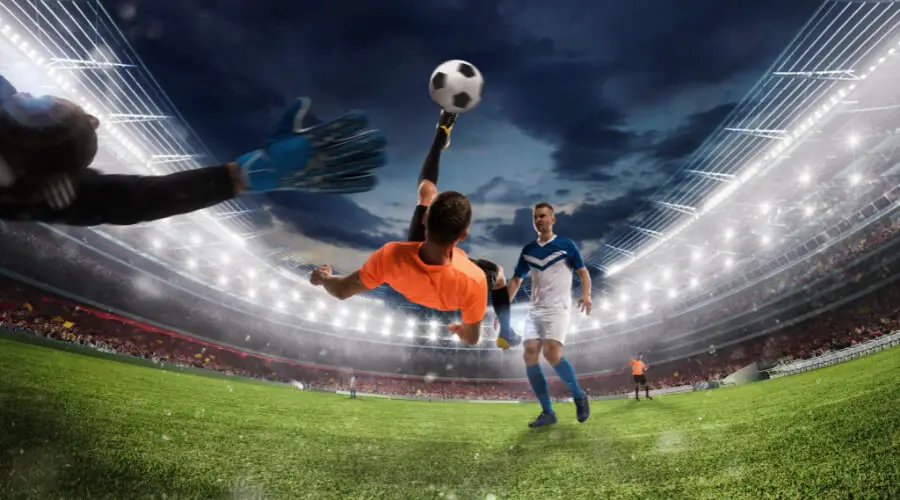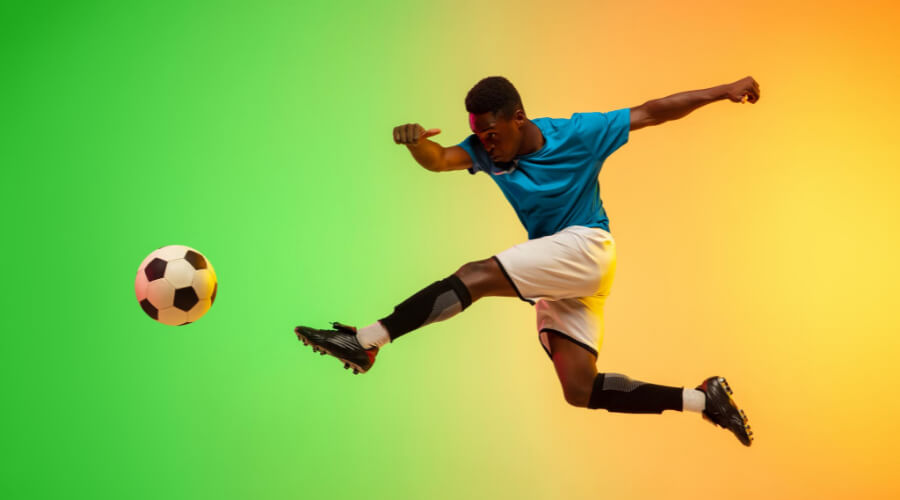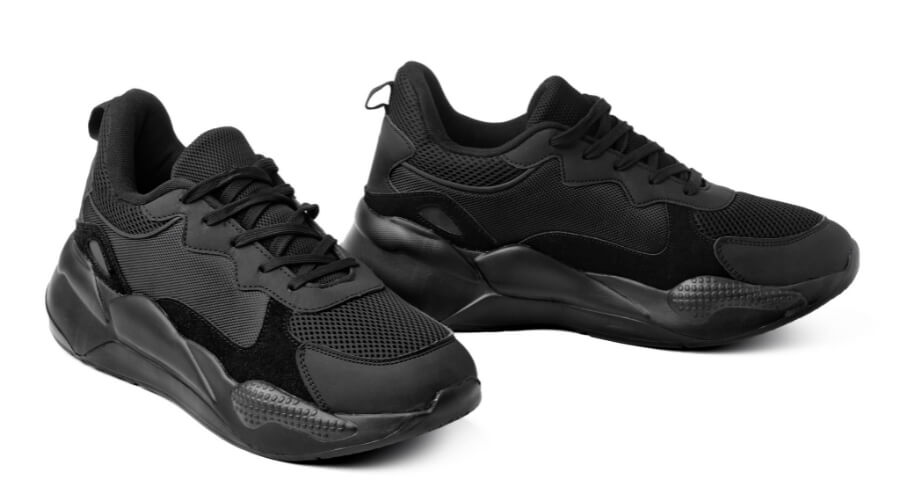No. Running shoes are not suitable for indoor soccer. Likewise, Players shouldn’t wear indoor soccer shoes for running as they are uncomfortable. Indoor soccer, also known as arena soccer, indoor football, floorball, or fast football, is a type of five-a-side football. It is an option that allows players to play soccer indoors when the weather isn’t favorable. The sport is popular in Canada and the United States. Many modifications that suit indoor soccer players have been made. These modifications include securing the area by a wall to keep the ball in play.
Where Is Indoor Soccer Played?

Indoor soccer is played indoors, and the court is rectangular with an artificial turf surface. Two of the changes made by the football association are that there are no offsides and no out-of-bounds because the ball bounces off the wall without stopping the game.
Two teams consisting of six players, including the goalkeeper, play against each other. The game is played in four quarters, each taking fifteen minutes, and the team with the highest goals wins.
In case of a tie, an extra fifteen minutes is played with the golden goal rule. The sport is famous in the UK, the USA, and Mexico. These countries play the sport in league competitions.
Indoor soccer needs different kinds of shoes that are different from running shoes. Some players wear running shoes when playing the sport, which is okay but is not the best option.
Differences Between Running Shoes And Cleated Shoes
When buying running shoes, runners should check for shock absorption. For long-term durability, running shoe soles are made from carbon rubber that is heavy and stiff, offering more foot stability.
Some shoe soles, such as Blown, consist of air and are lighter and flexible. People with flat feet should avoid highly cushioned running shoes for flatter, firm soles. Players prefer cushioning shoes, although most prefer thin shoe soles to allow more sensation.
Cleated shoes are suitable for sports like soccer, baseball, and football. It is made from plastic or metal and is small protrusions, making it possible to move freely on grass or other soft materials.
Some cleats are clipped on, others come as part of the sole, and some are screwed into the shoe. Cleats for indoor soccer shoes lack toe spike, unlike cleat shoes for football and baseball that create a drag that would prevent kicking the ball.
Notable Features Of Indoor Soccer Shoes

In indoor soccer, the ball moves faster than in regular soccer because of the difference in the arena, making the players react quickly. The arena can have different surfaces such as carpet-like AstroTurf and artificial field turf with fill material like ground-up rubber or cork.
Special shoes are made for these types of surfaces so that players perform their best. Listed below are the advantages of indoor soccer shoes versus running shoes.
Stability and Balance
Unlike running shoes, indoor soccer shoes provide the best balance. Indoor soccer shoes hit the floor without an extra cushioning layer, making it easy to cut and turn during the game.
Indoor soccer shoes have a flat sole that prevents injuries since the foot has a more stable support base. Most indoor soccer shoes have suction-like grip patterns that prevent players from slipping.
Soccer Shoes Uppers
Indoor soccer shoes have uppers that give a better ball touch. The uppers comprise synthetic and natural materials, including leather, kangaroo skin, and calfskin, which help gripping for reasonable ball control. The shoes have flaps that protect the shoelaces not to affect the players’ game when kicking.
Stable Outsole
Running shoes are made of thick soles filled with gel and air, reducing impact when running. The shoes come with a large heel that springs runners onto their toes to fasten speed and move forward on hard surfaces but aren’t suitable for cutting, balancing, or turning on artificial turf. Unlike indoor soccer shoes, running shoes do not have a gum-rubber or non-marking flat outsole perfect for turning on a dime.
Traction and Gripping
Turf shoes are best for playing indoors on field turf. The sides have small rubber studs to enhance traction and not tear up the turf. There is a difference between field turf and an indoor field covered with carpet-like AstroTurf material or grass field. Cleats do not go well with carpet-like material because it tears up the surface.
Indoor Soccer Shoes Buying Tips

Get the right fit: It is imperative to try shoes before buying to get the right fit. Shoes need to be comfortable and shouldn’t pinch the foot, and it is best to wear socks when trying on shoes. Players with broad feet should choose shoes that have a more comprehensive fitting.
Grip: The grip is another consideration with three types, flat sole, rubber grip, and solid soles.
Design: Ensure you consider the design of the shoe. Players should buy shoes that support the heel and arches because it helps guard against muscle sprain and inevitable knocks in indoor soccer.
Advantages and Disadvantages of Wearing Indoor Soccer Shoes Casually
Some people enjoy wearing indoor soccer shoes because they enjoy the shape and might find it comfortable. Wearing indoor running shoes has its merits and demerits.
Merits
1. Shape
The shape remains intact even after playing indoor soccer. The shoes will enhance the appearance and not ruin it. The shape isn’t sporty; therefore, you can wear it on all occasions.
2. Comfort
Indoor soccer shoes are more comfortable than standard shoes. Comfort is a subjective matter, and there is nothing wrong with wearing soccer shoes casually if it is comfortable.
3. Lightweight
Indoor soccer shoes are lightweight, just like sneakers. No extra weight is carried when wearing the soccer shoes, allowing them to move freely and effortlessly.
Demerits
1. Shoe Damage
The shoes are designed for indoor plain surfaces, and wearing them on rough surfaces loosens the grip and damages the shoe. The more the shoes are worn outside, the faster they wear out, leading to a shorter lifespan.
2. Thin Sole
Indoor soccer shoes are thin and lightweight to make movement easier. Sneakers are best for everyday or casual wear as the sole is thicker and more comfortable. Although, comfort is subjective.
3. Health Concern
Indoor soccer shoes are designed for wearing for a short duration. Therefore, wearing the shoes for a more extended period will lead to hip, knee, and back pain.
Conclusion
As stipulated on this page, it’s unadvisable to wear running shoes when playing indoor soccer as their features are incompatible with the game. The best you can do is wear a shoe designed for indoor soccer to ensure your body is optimally protected.
Reference 1:Are Indoor Soccer Shoes Good for Running? Find Out Here – Coaching Kidz
Reference 2: Can You Play Indoor Soccer With Running Shoes? (Guide) – Genuine Soccer

